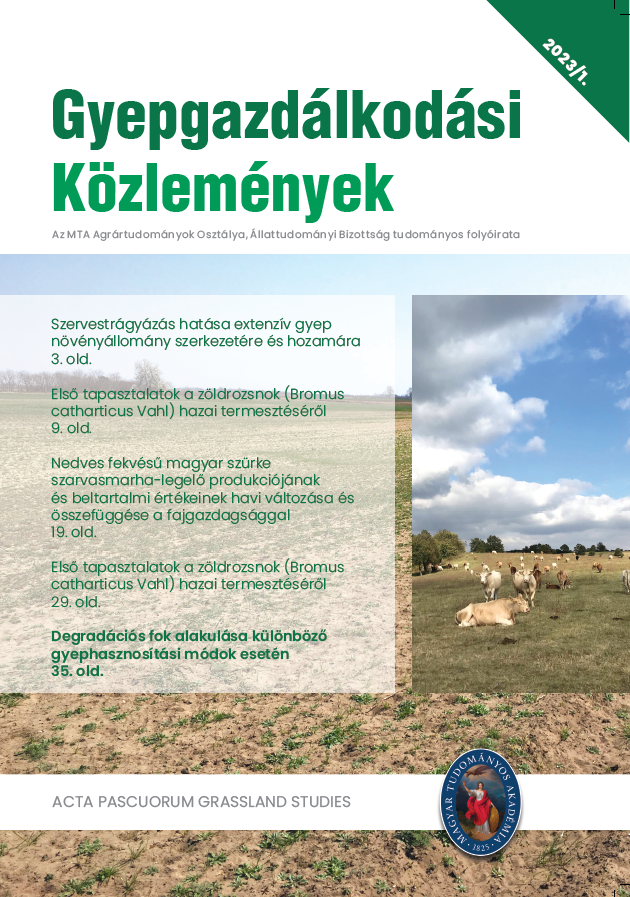Degradation degree evolution under different grassland management
Authors
View
Keywords
License
Copyright (c) 2023 Grassland Studies

This work is licensed under a Creative Commons Attribution-NonCommercial-NoDerivatives 4.0 International License.
How To Cite
Abstract
The objective of this manuscript is to clarify the changes in vegetation structure of an extensively managed grassland association under different land use practices. In the grasslands of the Hungarian Great Plain, the westernmost part of the Eurasian steppe, the largely decreasing grazing livestock numbers and the almost disappearing pastoral grazing make the topic very topical. We analysed the last 4 years of the study period 2009-2020 and found that the lowest degradation rates were measured in the meadow utilisation management, with values ranging from 0.277-0.463 in the 11th year of the experiment. And the highest degradation values were measured in the treatment with the overgrazing mode, with degradation degrees 3.43-5.0 in the 11th year of the experiment. In the treatment demonstrating the effect of overgrazing, we measured a high increase in the cover value of the weed Hordenum murinum, which is very dangerous for sheep, between 2017 and 2020, with an average of 107.6%.

 https://doi.org/10.55725/gygk/2023/21/1/12275
https://doi.org/10.55725/gygk/2023/21/1/12275